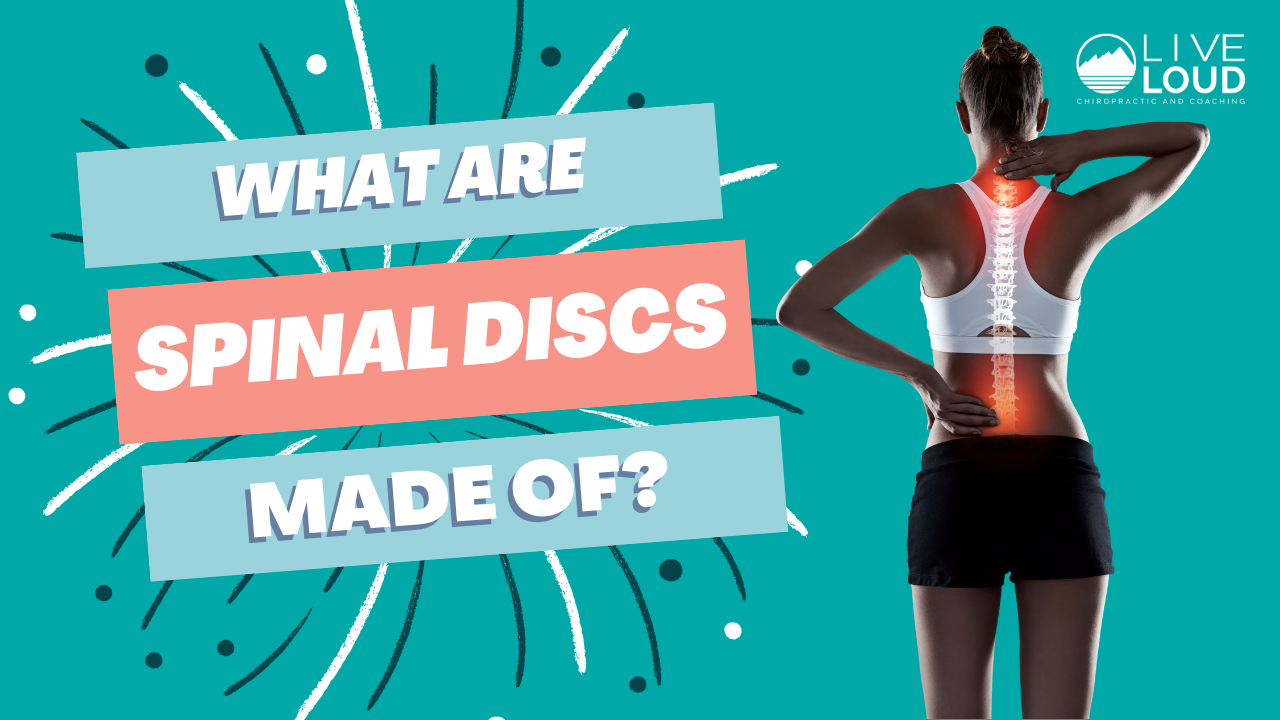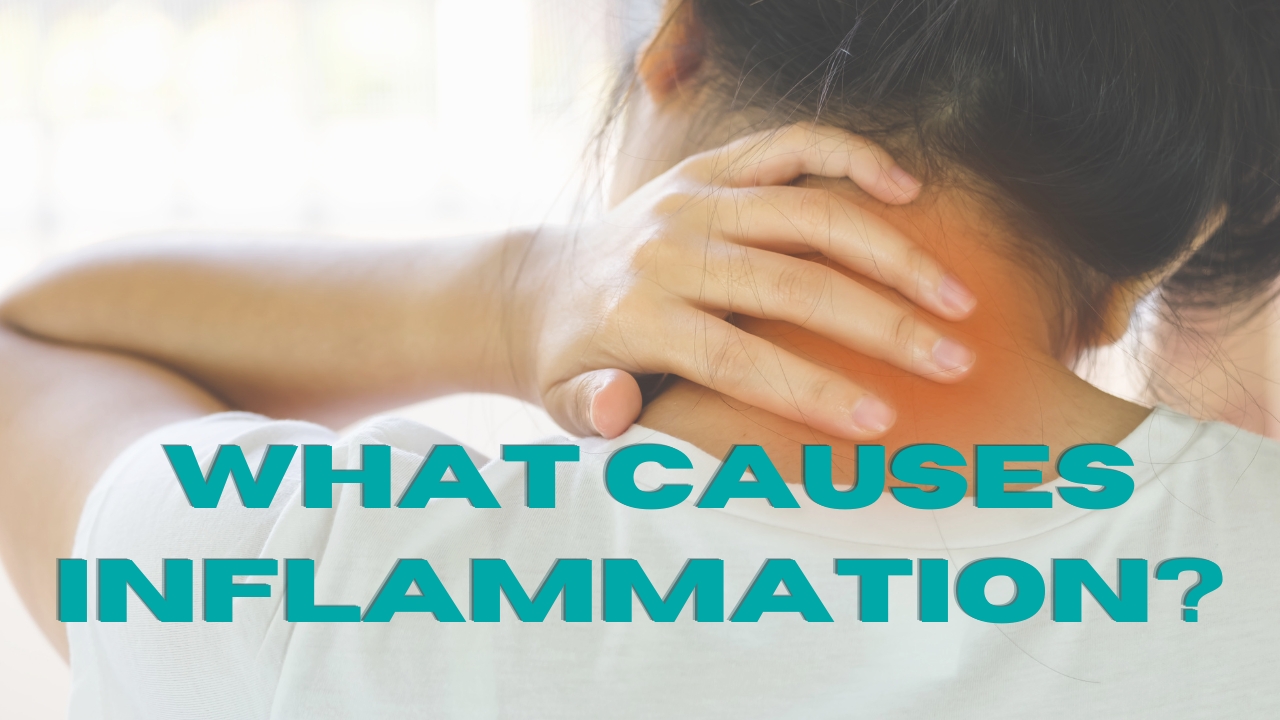Month: April 2023
Spinal Discs
Spinal Discs
What are Spinal Discs Made Of?
We all know spinal discs are important- but to understand why, the real question is; what are they made of? Your spinal discs are little cushions that sit between the bones or vertebrae in your spine. Each one of your discs is made up of a tough, fibrous outer layer (annulus fibrosis) and a jelly-like inside layer (the nucleus pulposus). The tough outer layer contains and protects the softer inside layer. These small discs have a big job. They enable your spine to move in all directions.
Why it Matters:
The nucleus pulposus (inner layer of the disc) is mostly made up of water. The high water content helps your discs stay supple and moveable. It acts like a small swivel to allow your body to tilt and rotate. As you get older, your discs tend to lose their high water content and can become degenerative. Degenerative discs don't move as well, are more prone to cause pain, and even contribute to compression on your spinal nerves.
-
Your spinal column has 24 moveable bones with spinal discs between each pair
-
Spinal discs are designed to help your move in all directions
-
Movement of your spine can help keep your spinal discs healthy
Movement is one of the best ways to keep your spinal discs healthy. Since your spinal discs don't have a very good blood supply, movement is how they bring in nutrients. Moving your spine helps your spinal discs get in nutrients to stay healthy and push out waste contributing to pain and inflammation. If your neck or back hurts, give us a call- we'll help you get your life back from pain.
What Causes Inflammation?
What Causes Inflammation?
Chronic inflammation is one of the most significant health issues many of us will face today. It’s been linked to everything from chronic pain to a wide range of other mild and serious medical conditions.
It’s important not to mistake acute inflammation for chronic inflammation.
Acute inflammation describes your body’s natural defense mechanism against injuries or toxins. When your immune system is constantly stressed, it can then lead to chronic inflammation which in turn can lead to other conditions.
Why it Matters:
In 2014, it was estimated that over 50% of people had at least one chronic condition, and 40% had more than one.
Chronic inflammatory diseases can include respiratory and heart disorders as well as diabetes.
The majority of these disorders are linked directly to our lifestyle choices. Each day you have the option to either increase or decrease your state of inflammation.
Here are some fundamental ways to start taking your life back from chronic inflammation:
-
Eat right. Fruits and vegetables are high in natural antioxidants and may protect the body against inflammation.
-
Get enough rest. Maintaining a regular sleep schedule can reduce your physical and emotional stress levels, which has been linked to a lower risk of chronic inflammation.
-
Stay active. Exercise can lower the amount of pro-inflammatory chemicals in your body and benefit your cardiovascular and mental health.
Reducing your risk of chronic disease and inflammation begins with the choices you make each and every day, and we’re here to help you make the best decisions to help you live a full, active, and healthy life.
If you believe you’re not eating, sleeping, or moving as well as you would like, be sure you have an appointment scheduled with us. Together, we’ll analyze your habits and create a plan to get you and your well-being back on track.
Most Chronic Diseases are Linked to Inflammation
One of the most important health discoveries of the past 20 years has been that the immune system and inflammatory process are involved in nearly every mental and physical health problem we encounter today.
It’s safe to say that chronic inflammation is a leading cause of chronic disease.
Why it Matters:
Chronic inflammation is a condition that can affect your immune system and can influence all of your organs, tissues, and cells.
Unlike the normal inflammatory response that happens after an injury and goes away within a few days, chronic inflammation is an abnormal response that can last years.
Here are just a few of the ways chronic inflammation can affect your body.
-
Chronic inflammation can cause your immune system to function sub-optimally.
-
Fatigue, increased blood pressure, insulin resistance, and poor appetite have also been linked to chronic inflammation.
-
Heart disease and other neurodegenerative disorders have been linked to long-term chronic inflammation.
It’s true. It’s impossible to prevent chronic disease completely, but you have the power to reduce your risk every day.
Taking action steps like eating right and exercising each day have been shown to dramatically decrease chronic inflammation and your likelihood of developing a chronic disease.
Know we’re here to help you live an active and fulfilling life. We understand that it’s hard to get enough exercise each day when you’re in pain. We hope you’ll take a moment to schedule a movement assessment with us so we can create a plan to help you start moving and feeling better..
Let’s take the first step towards reducing your risk of chronic disease together!
How Inflammation Affects Your Body
Inflammation is like a check engine light for your body. It tells you that something isn’t quite right, and you should pay attention.
The first step in discovering the cause of the problem is determining whether you have acute or chronic inflammation.
Acute inflammation is short-term and plays a critical role in healing and injury repair. Chronic inflammation on the other hand describes a condition where your immune system continues to produce white blood cells and chemicals even after the injury is gone.
Why it Matters:
The combination of chronic inflammation and an excess of white blood cells can cause some problems for your immune system. In some cases, your immune system may even begin to target healthy cells and structures.
If sustained over a long period of time, you may experience changes in your cells, tissues, and organs that can increase the likelihood of disease.
Of course, one of the most significant challenges is that chronic inflammation can be invisible unless you know where to look.
Here are a few of the most common signs of chronic inflammation.
-
Insulin resistance. Insulin helps control the sugar level in your blood, and inflammation could affect how well your insulin works.
-
Muscle weakness. Chronic inflammation can cause your immune system to mistakenly attack and inflame your muscles, which could make you weaker.
-
Fatigue. Fatigue is a sign of long-term inflammation and common in inflammatory diseases like fibromyalgia, multiple sclerosis, lupus, and rheumatoid arthritis
If you’ve been living with muscle weakness, fatigue, or other nagging pains, you may also be living with chronic inflammation.
It’s often your daily habits that contribute to this state of chronic inflammation.
Know that our team specializes in helping you create a healthy lifestyle through daily habits that combat chronic inflammation.
We invite you to take the first step towards better health by scheduling your next visit with us today so we can work together to help you feel and function at your best.
How to Reduce Pain and Inflammation Naturally
While the inflammatory process is extremely complex, the solutions aren’t. Reducing pain and inflammation naturally is simple with the right strategy.
Maintaining a healthy weight, eating a balanced diet, getting enough sleep, and exercising regularly are all ways that have been shown to effectively reduce pain and inflammation naturally.
Why it Matters:
Your diet and daily exercise routine play a huge role in managing chronic inflammation because each influences your weight and sleep patterns.
Foods high in antioxidants (like berries, turmeric, green vegetables) can lower your overall inflammation and provide you with more energy. Daily exercise can help protect you against conditions such as heart disease and obesity, which have both been linked to chronic inflammation.
Did you know…
-
Antioxidants known as polyphenols can lower inflammation.
-
Even 20 minutes of daily exercise can have an anti-inflammatory effect.
-
Proper sleep patterns encourage recovery and can lower stress and inflammation levels.
Reducing pain and inflammation naturally starts with your ability to move your body and exercise daily.
If you notice an injury or pain is slowing you down, take a moment to schedule an appointment with us today.
Our expert team will work with you side by side to help you move better, and once you start moving better, everything else becomes easier!
Give us a call. Let’s make chronic inflammation a thing of the past.
Science Source(s):
Chronic Inflammation in the Etiology of Disease Across the Life Span. Nature Med. 2019.
Chronic Inflammation. StatPearls. 2021.
Signs of Chronic Inflammation You May Not Expect. WebMD. 2019.
Understanding Acute and Chronic Inflammation.
Harvard Health Publishing. 2020. Understanding Acute and Chronic Inflammation. Harvard Health Publishing. 2020.



